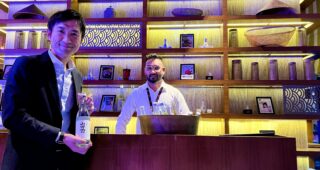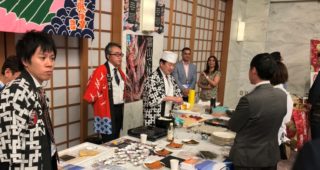Is Sake classically a Wine or Beer? To be precise it is none. Even before embarking on a Sake tour to Japan on the invitation of Japan Sake and Shochu Makers Association (JSS), I didn’t have a figment of doubt about the beverage’s distinct identity. However, with a history that spans nearly two millenniums there has to be more to Sake than just meets the eye. Hence the invitation by the JSS came to me like a God sent opportunity. It was a perfect setting to develop a deeper understanding of a beverage that deserves much more attention than it probably gets in the current day.

Similar yet Different
Sake is often compared to beer or wine since its production is somewhat similar to these two. Many opine that the balance tilts more in favour of beer, given that both of them are made from grains that do not contain readily fermentable sugars, and quite unlike wine that is made from fruits containing the readily fermentable fructose.
But Sake’s overlap with wine is well known too, as both of them are produced largely sans carbonation- with the exception being Awasake (sparkling sake) that can again be equated to sparkling wines. The alcoholic content of Sake is also closer to wine than beer, averaging at around 15-17 percent by volume (ABV).
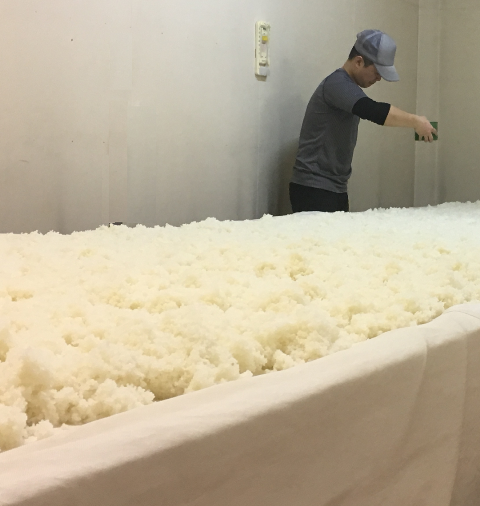
That said, Sake is as distinct as it gets. The beverage has a unique production methodology of multiple parallel fermentation that happens on account of the simultaneous working of Koji Rice (rice culture that converts starch into sugar) and Yeast (to produce alcohol from sugar). Milling of rice grains to produce different styles of Sake is also unique to the beverage alone.
It would hence be safe to say that Sake’s comparison with wine or beer is largely on account of facilitating better understanding among its early imbibers.
The “cépage “and “terroir” of Sake
Stretching the analogies further, Sake is quite relevant to the wine concepts of cépage (varietal) and terroir (soil type, micro climate and production methods). Different varieties of rice are grown in Japan’s various prefectures that lend the resultant Sakes unique characteristics- somewhat like a Pinot Noir grown in Burgundy or a Cabernet Sauvignon grown in Bordeaux.
Rice for making Sake is entirely different from table rice, the former being a fatter grain with more starch content. That said, there are some breweries that also make Sake from table rice to make their portfolio more diverse.
The “terroir” connect of Sake can be related to its production variables like soil type, water, temperature of fermentation, also the different strains of koji and yeast that impart every Sake its distinctive character.
Venturing into the Sake Heartlands
Our group of seven, drawn from global beverage journalists (USA, UK, Germany, Latvia, Malaysia, Philippines and India) was primed with Sake knowledge at the JSS office in Tokyo, courtesy a marathon day long session conducted by famed Sake Evangelist and Educator John Gauntner.

A tasting at JSS Sake and Shochu Information Center followed, where at any given time, more than 60 kinds of Sakes from all over Japan are available. We could sample and discuss many of the Sakes at the centre with Gauntner and were ready to undertake the expedition that lay ahead.
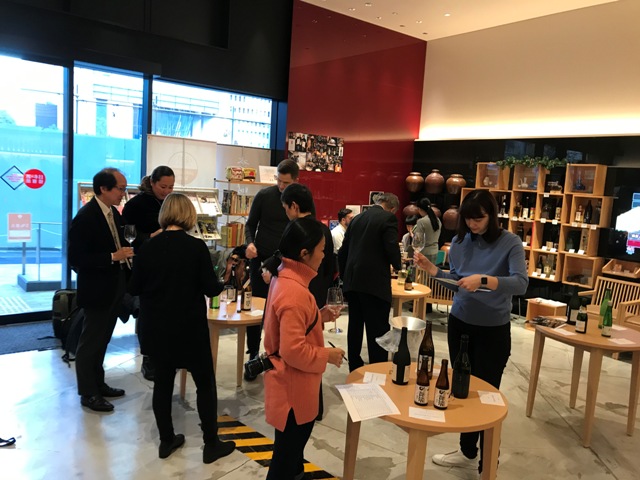
In the next few days, we visited breweries in the two northernmost prefectures of the Japanese mainland viz. Aomori and Iwate. We were ably led by Etsuko Nakamura, a renowned Sake Tours expert and Mika Eoka, a seasoned Sake Sommelier from the JSS who ensured that we did not miss out on any aspect of the tour that was planned to the minutest of details.

During the tour, we had interactions with brewery owners, Tojis (Sake master brewers) and tastings galore that facilitated a deep understanding of the world of Sake. Authentic paired meals from the respective regions ensured that we understood the beverage in-depth in the food context. A step further was the various cultural engagements like traditional music, folk dances and visits to regional museums that made our experience holistic.
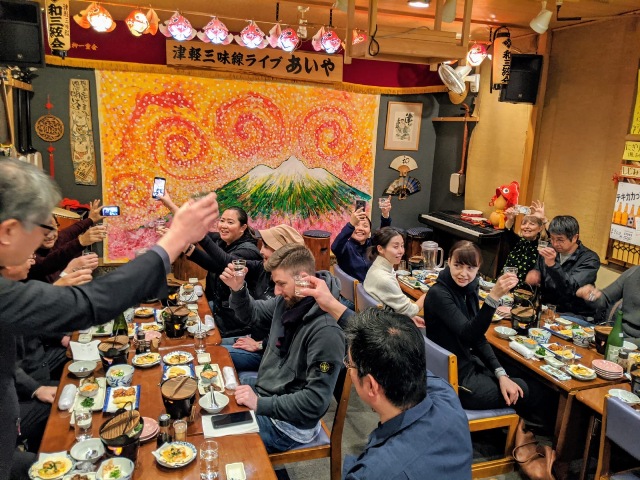
Aomori Prefecture
From Tokyo, we flew to Aomori (around an hour), which is the name of a prefecture as well as its capital city. The region is renowned for its spectacular winter landscapes as it is, for its varied agricultural produce- most significantly Fuji apples.

There are nineteen Sake breweries in Aomori, many of which are family owned and have strong ties to their local communities. Two types of Sake rice native to Aomori are used in the region. While Hana-fubuki is mainly used to make Junmai Sakes (Sakes produced from only rice, koji, and water), Hana-omoi is largely used for premium Ginjo and Daiginjo Sakes. Aomori brewers also use locally developed yeast called Mahoroba-hana, which adds an exuberant aroma to premium Sakes. In a course of two days we visited three breweries in Aomori.
Breweries Visited- Aomori
Rokka Shuzo
Location: Hirosaki, Aomori
Annual Production: 2,000 Koku ( 3,60 ,000 Litres)
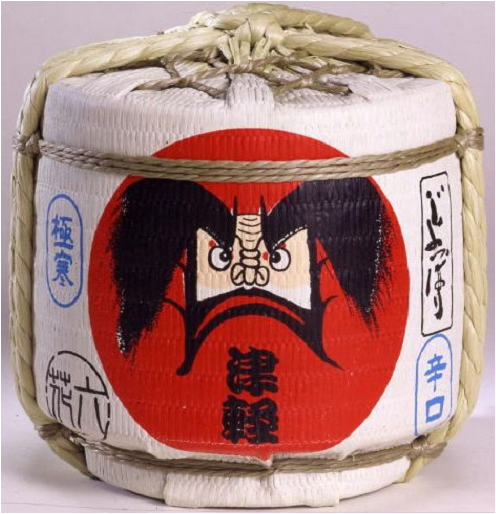
USP: Well-known for its Joppari brand with the striking Daruma logo. “Daruma” is the Japanese name for Bodhidharma (in Sanskrit) who brought Zen Buddhism from India to Japan via China.
Apart from its dry Joppari brand, Rokka produces sweet Sakes, liqueurs, and Sake brewed with rice using the natural cultivation method developed by Aomori apple farmer Kimura Akinori. There are five women among the Rokka Shuzo’s 14 brewing staff.
Matsumidori
Location: Hirosaki, Aomori
Annual Production: 450 Koku ( 81 ,000 Litres)

USP: An artisanal brewery producing handmade Sakes using traditional techniques. Several of them are certified as KJ (Kosher Japan), an increasingly popular standard in Japan and many countries worldwide.
The Matsumidori Brewery is located close to Hirosaki Castle in the city of Hirosaki. It was established during the Edo period as a Shubo (yeast starter) manufacturer selling to brewers in the nearby Tsugaru region. Since 1904 Matsumidori started producing its own Sake as well.
Hachinohe Shuzo Co. Ltd.
Location: Hachinohe, Aomori
Annual Production: 2,700 Koku (4,86,000 Litres)

USP: A family owned brewery that produces Sake only with Aomori rice. Their two main brands are Mutsu Hassen (fruity and drinkable) and Mutsu Otokoyama (crisp and well defined).
Hachinohe Shuzo was founded in 1740 and is located near the sea in the city’s harbor-side area. Today, it is run by the eighth generation of Komai family: brothers Komai Hideyuki and Komai Nobuyuki .
In Aomori, we were also privileged to experience the famous Neputa Mura museum in Hirosaki and participate in a religious ceremony at the Daisuke Shinto shrine. Our experience of the prefecture was highlighted with a Tsugaru Shamisen musical performance while savouring local cuisine with the brewers. There was also an organized activity that entailed us to shop and cook our own sea-food at the massive Hasshoku Centre – one of Japan’s largest indoor markets.
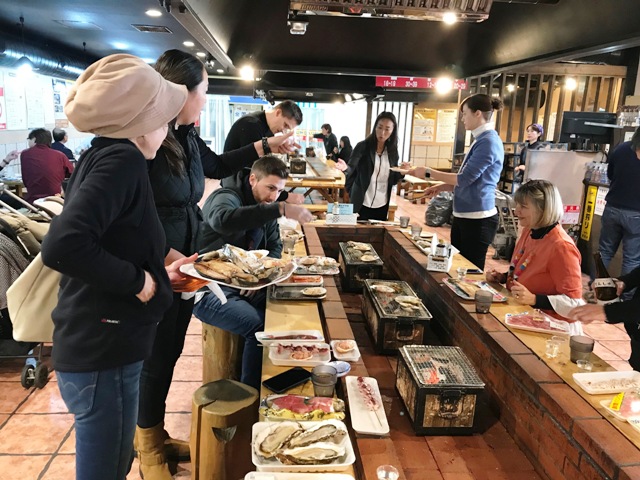
Iwate Prefecture
The next on our itinerary was Iwate, a prefecture bordering Aomori towards the South East. Iwate is Japan’s second largest prefecture after the largest and northernmost Hokkaido island . Historically, the prefecture has been Japan’s important political and cultural centre- something that manifests in the present day, with a number of sites having the UNESCO World Heritage tag. One such heritage that we were lucky to witness was Hayachine Kagura– a Shinto theatrical dance that is designated as UNESCO Intangible Cultural Heritage.
Our first stop in Iwate was the coastal city of Kamaishi that was one of the worst affected during the earthquake and tsunami of 2011. We were narrated a first- hand account of the tragedy by a survivor Ms. Iwasaki Akiko, owner of Houraikan Japanese Inn right by the sea. We also dined at her restaurant, partaking a meticulously assembled meal.
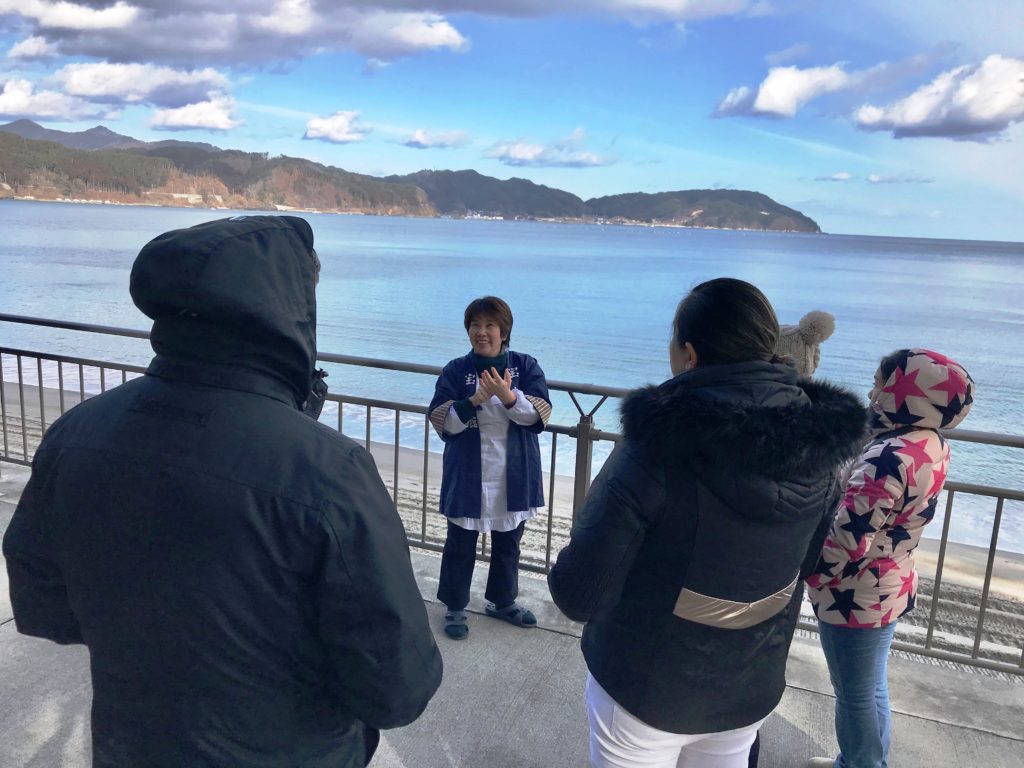

Iwate prefecture has 22 Sake breweries. The region’s local Sake rice varietals include the Yui-no-ka, Gin-ginga, and Gin-otome. Their native Jobanni (Giovanni)-no-shirabe yeast produces Sakes with refined taste and aroma, while the Yuko-no-omoi gives their Sakes a soft, warm flavor.
Iwate is also home to the highly skilled and respected Guild of Nanbu Toji (master brewers). The Nanbu Toji work all over Japan, typically producing clean, crisp Sakes with multiple layers of taste and aroma. A tasting was especially organized for us at the Guild where various brewers of the Iwate region converged to showcase a wide range of Sakes from their region.
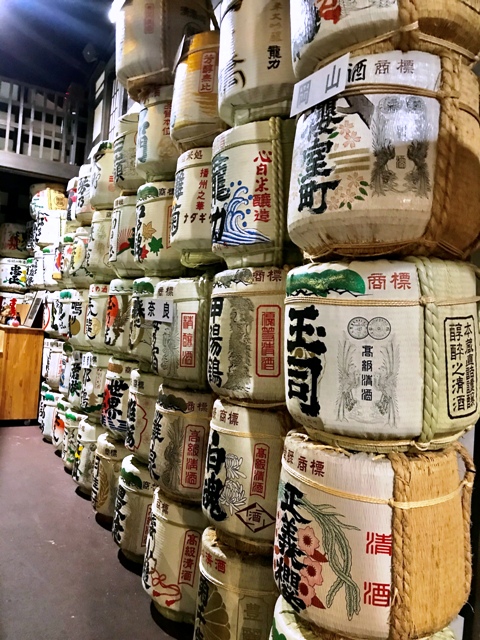
Breweries Visited- Iwate
Hamachidori Co. Ltd
Location: Kamaishi, Iwate
Annual Production: 1500 Koku (2,70,000 Litres)

USP: A true-blue local brand, with 92% of its Sake consumed in Iwate prefecture, of which about 60% is in Kamaishi alone.
The Hamachidori Sake Brewery was founded by the Niisato family together with influential Kamaishi residents. Built in the city center, it was the first brewery in the steel producing city of Kamaishi.
Tsukinowa Shuzoten
Location: Shiwa, Iwate
Annual Production: 600 Koku (1,08,000 Litres)

USP: Founded in 1886, the brewery is owned and managed by the 8th generation wife-husband team of Hiroko Yokosawa, one of the first female Tojis of Japan and her husband, Takayuki Yokosawa who is the president. They describe their ideal Sake as supple and clearly defined- much like a split bamboo .
The town of Shiwa has a long history of rice farming and Tsukinowa’s products include a Junmai sake made only from locally grown mochi-gome (glutinous rice for making rice cakes). The brewer’s other unusual products include an apple and plum liquor and an ice-cream made only from Koji and milk.
Sake in India
For India, Sake may still be a niche beverage, but a welcome sign is its significant growth in the past few years thanks to the proliferation of Japanese cuisine in India like never before. According to Amit Goel, owner Rad Elan Distributors Pvt. Ltd. one of the most prominent Sake importers of India, Sake has grown manifold in the past three years and is likely to maintain this uptick in the immediate future. However the two primary challenges that he identifies for Sake in India are its higher prices as compared to the average wine and lack of awareness among the drinking population of the country. “Proper Sake education can help to overcome both these challenges” adds Goel.
To that end, initiatives like these by the JSS will surely go a long way to put Sake in the global spotlight.
(With inputs from Japan Sake and Shochu Makers Association)
Read my detailed report on the breweries visited, published in the March 2020 issue of Spiritz Magazine:
(Click the download icon to read the pdf)








